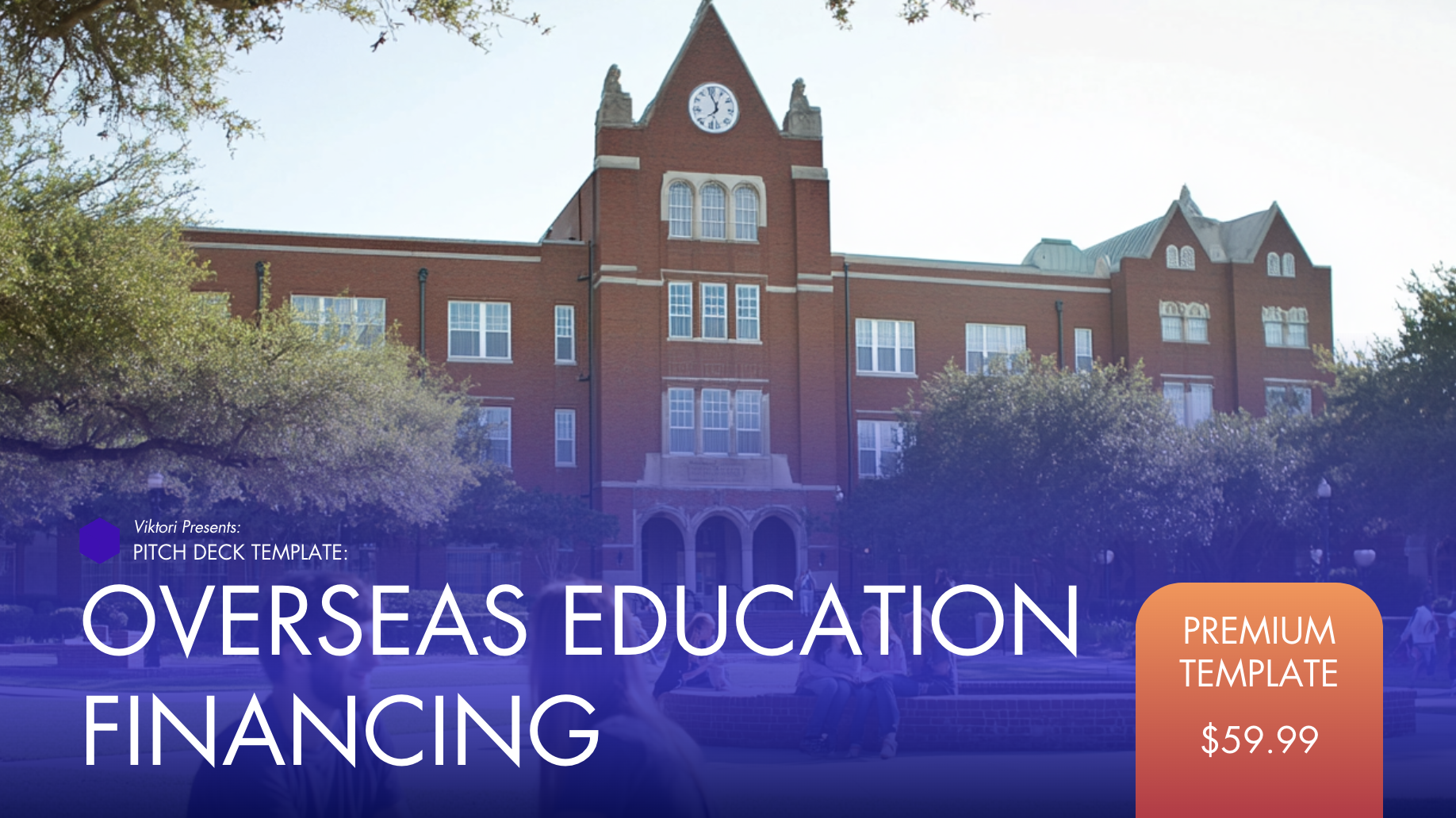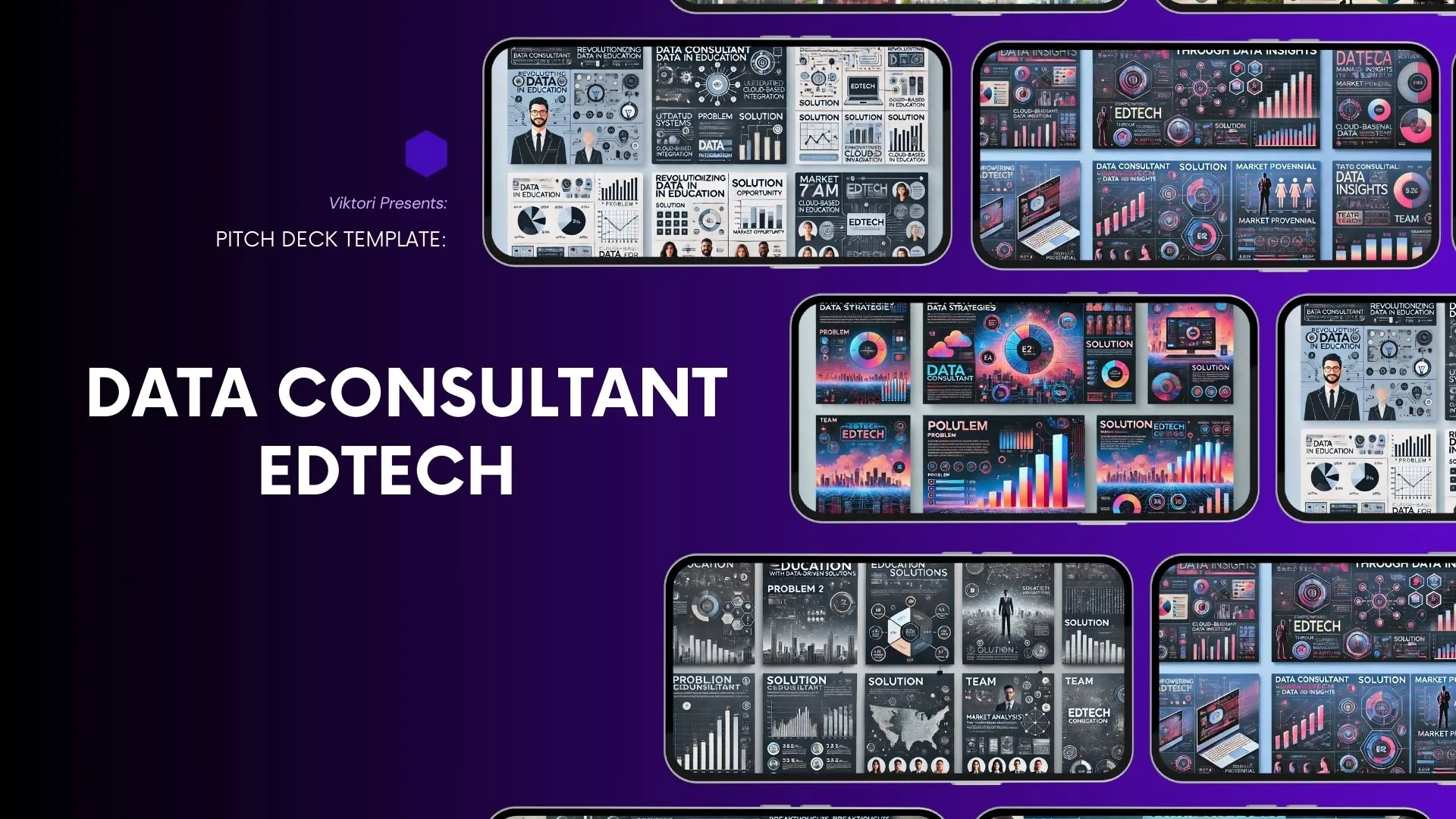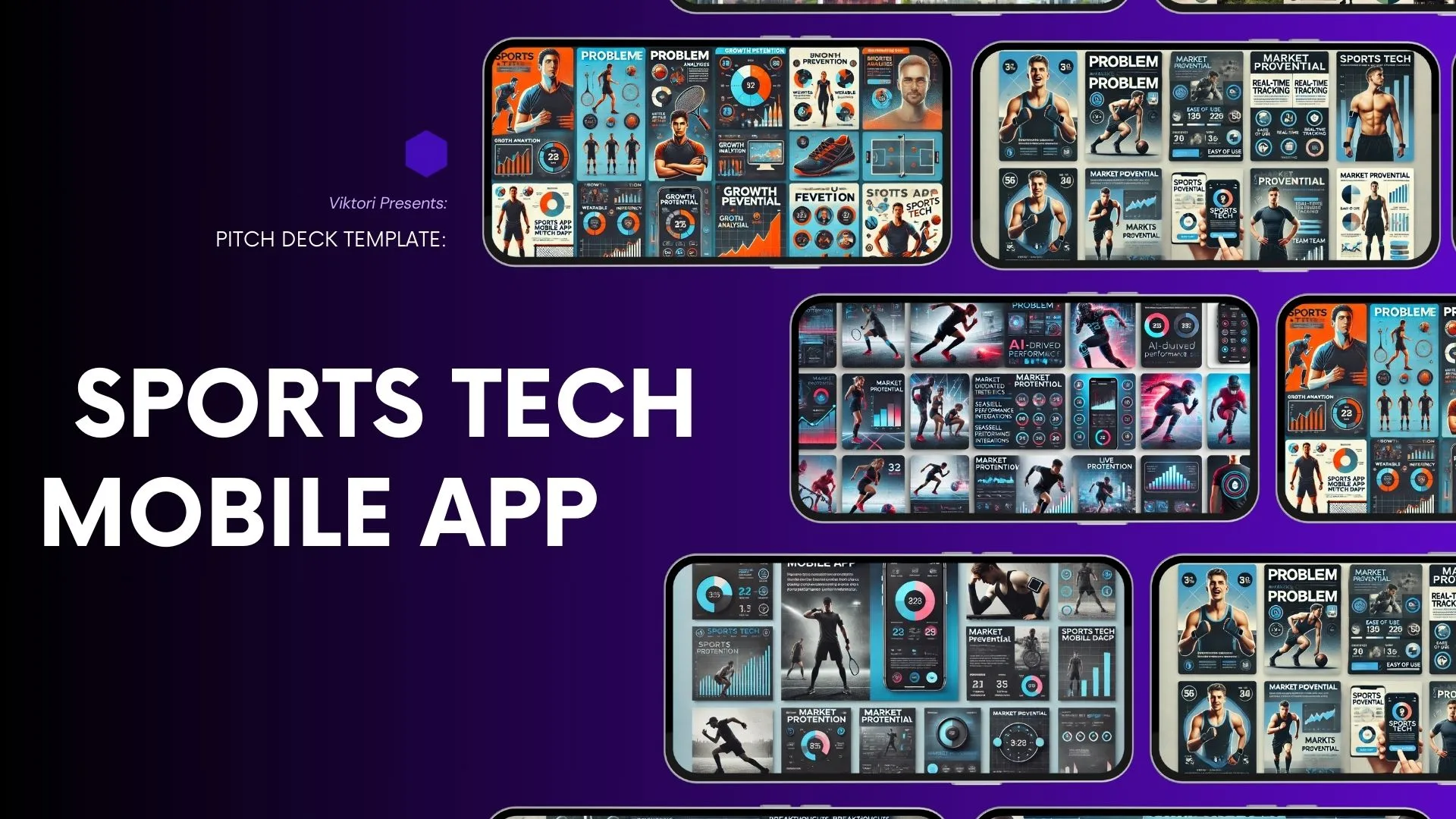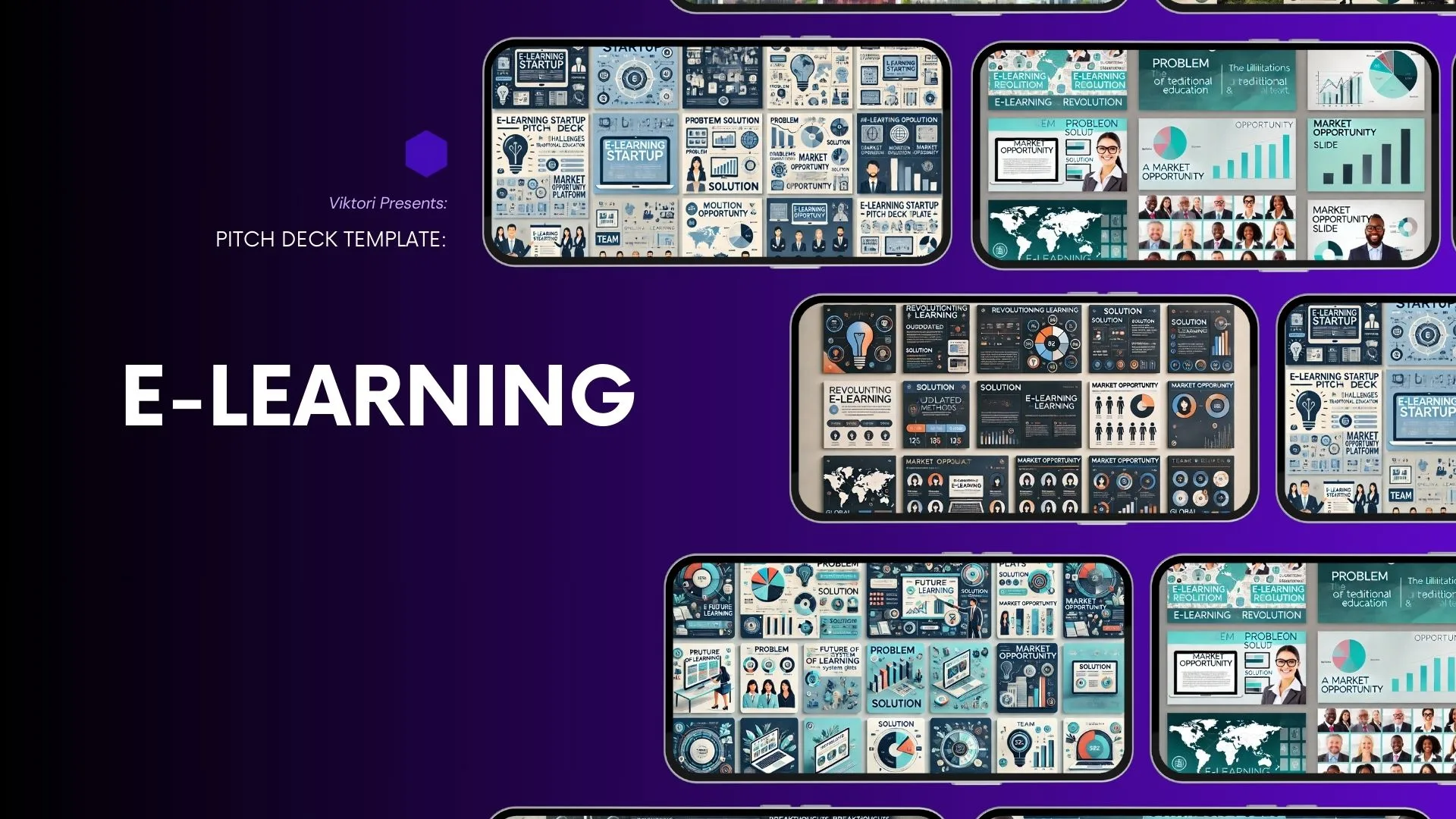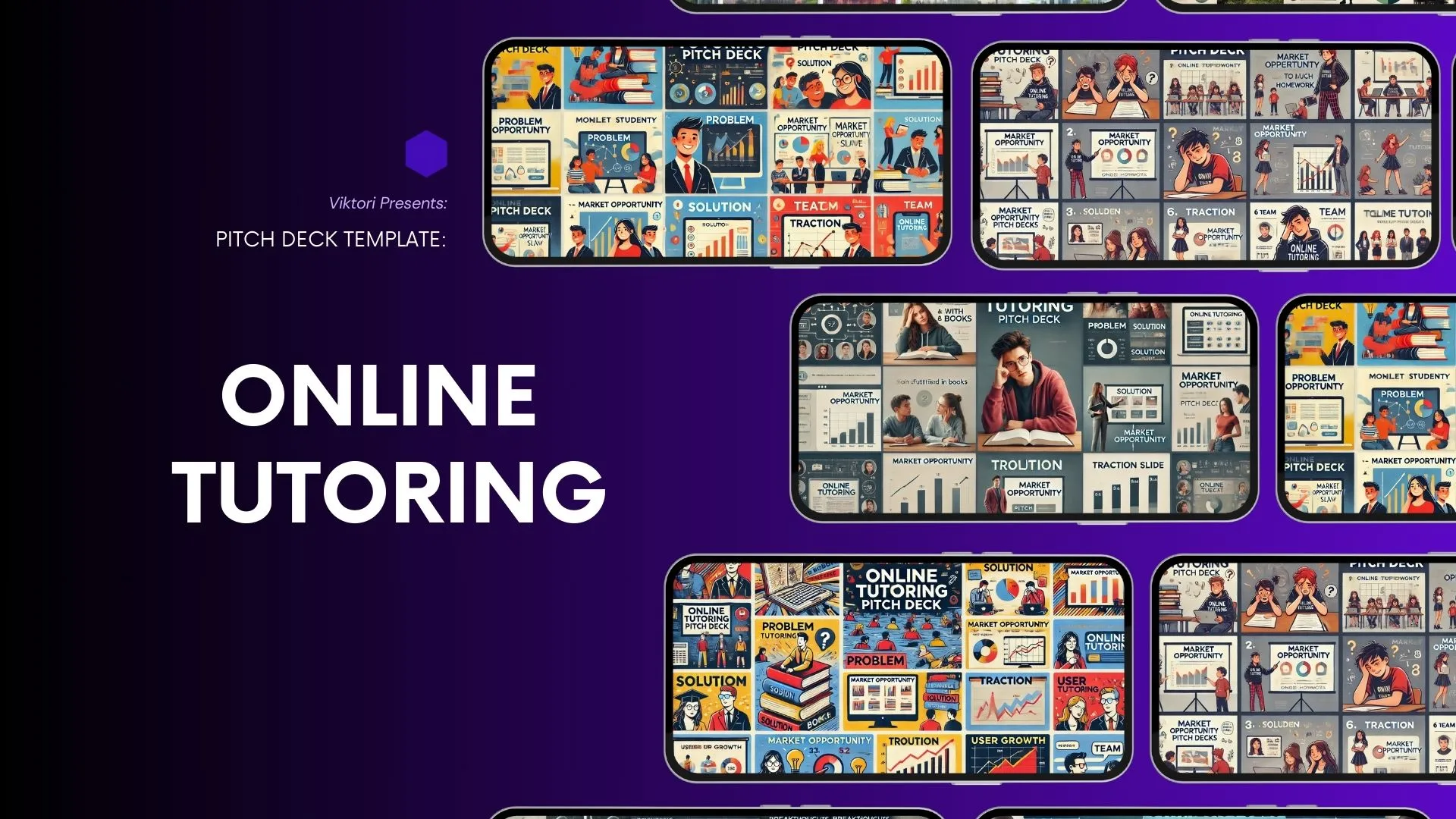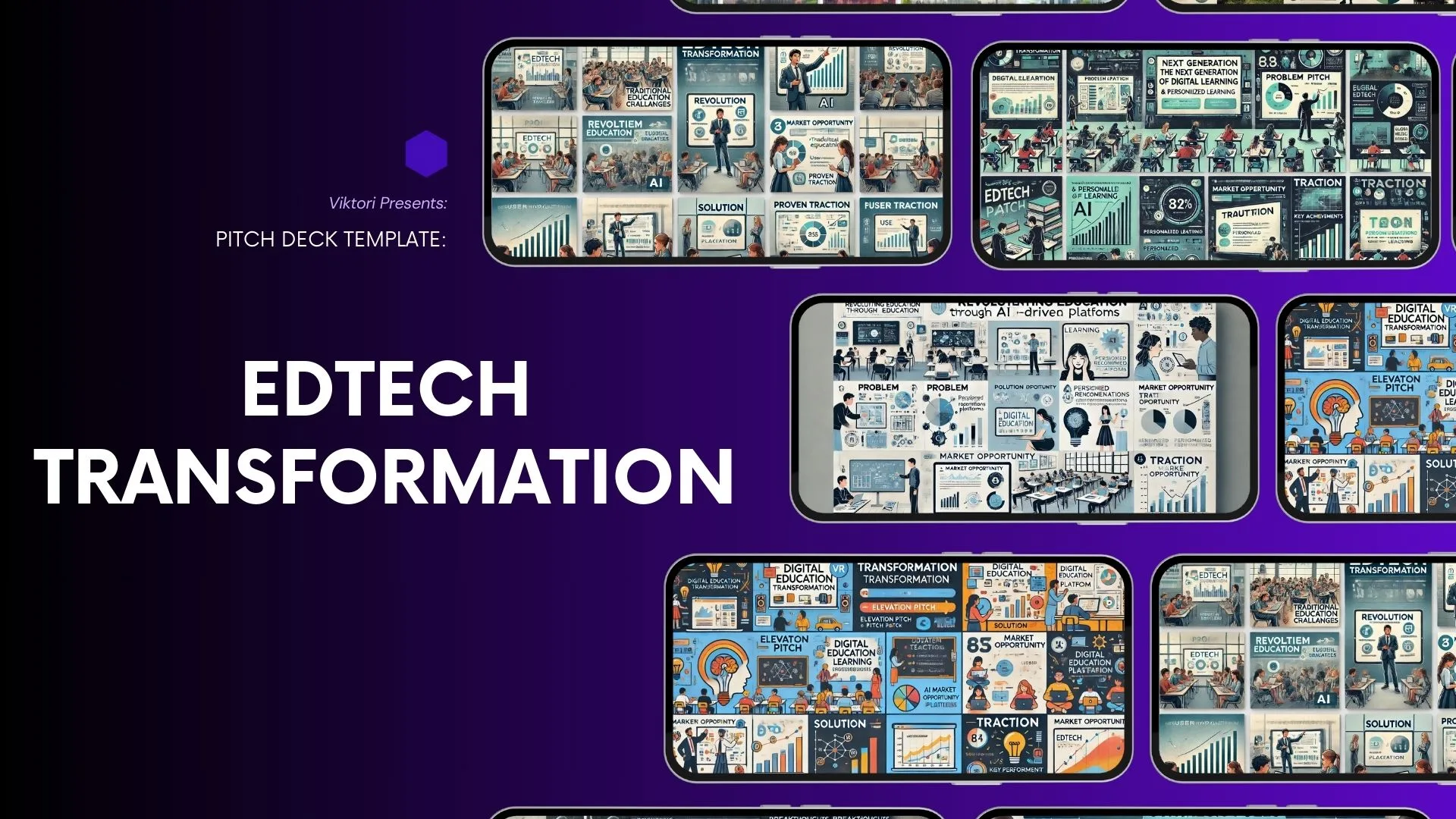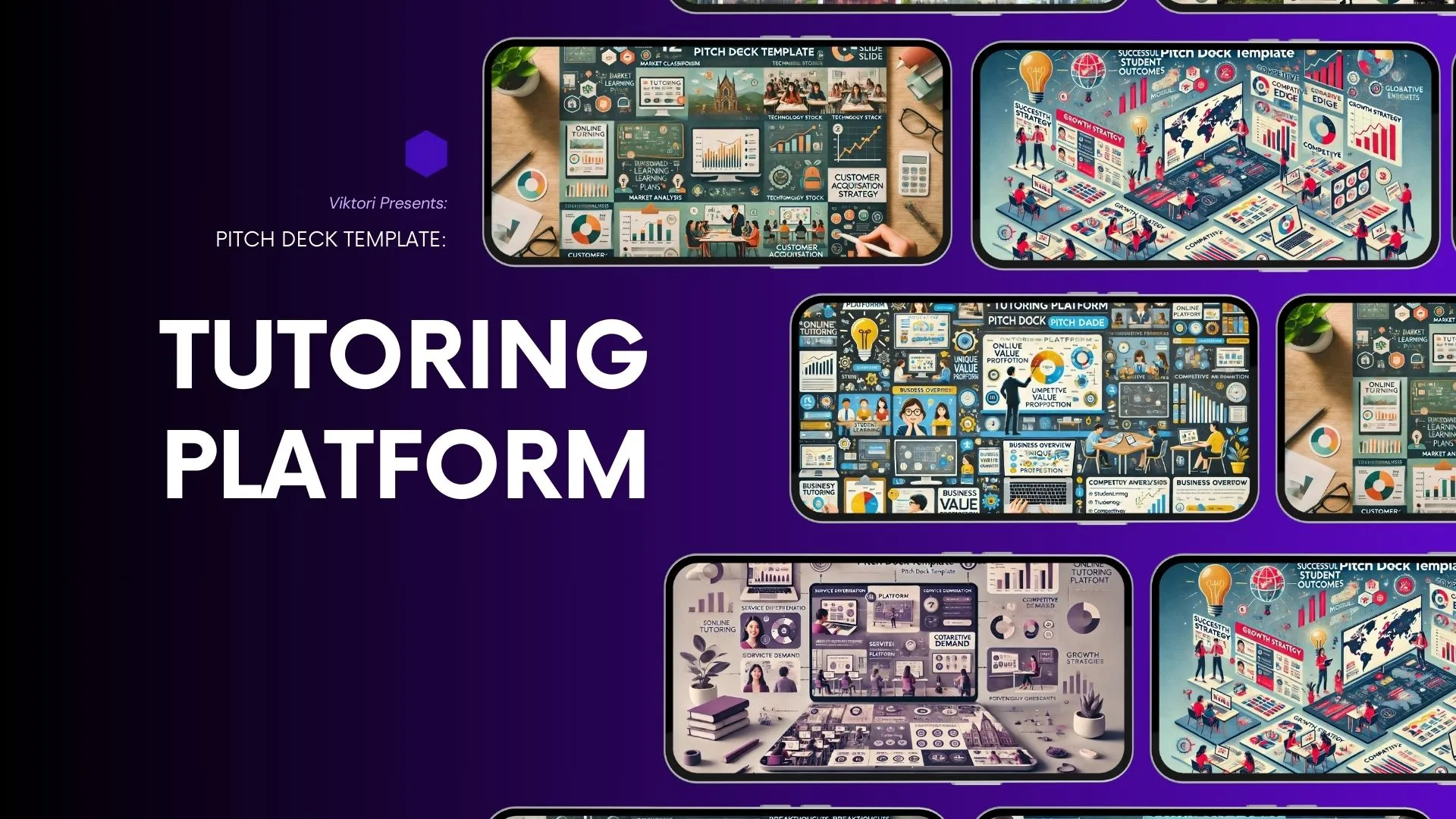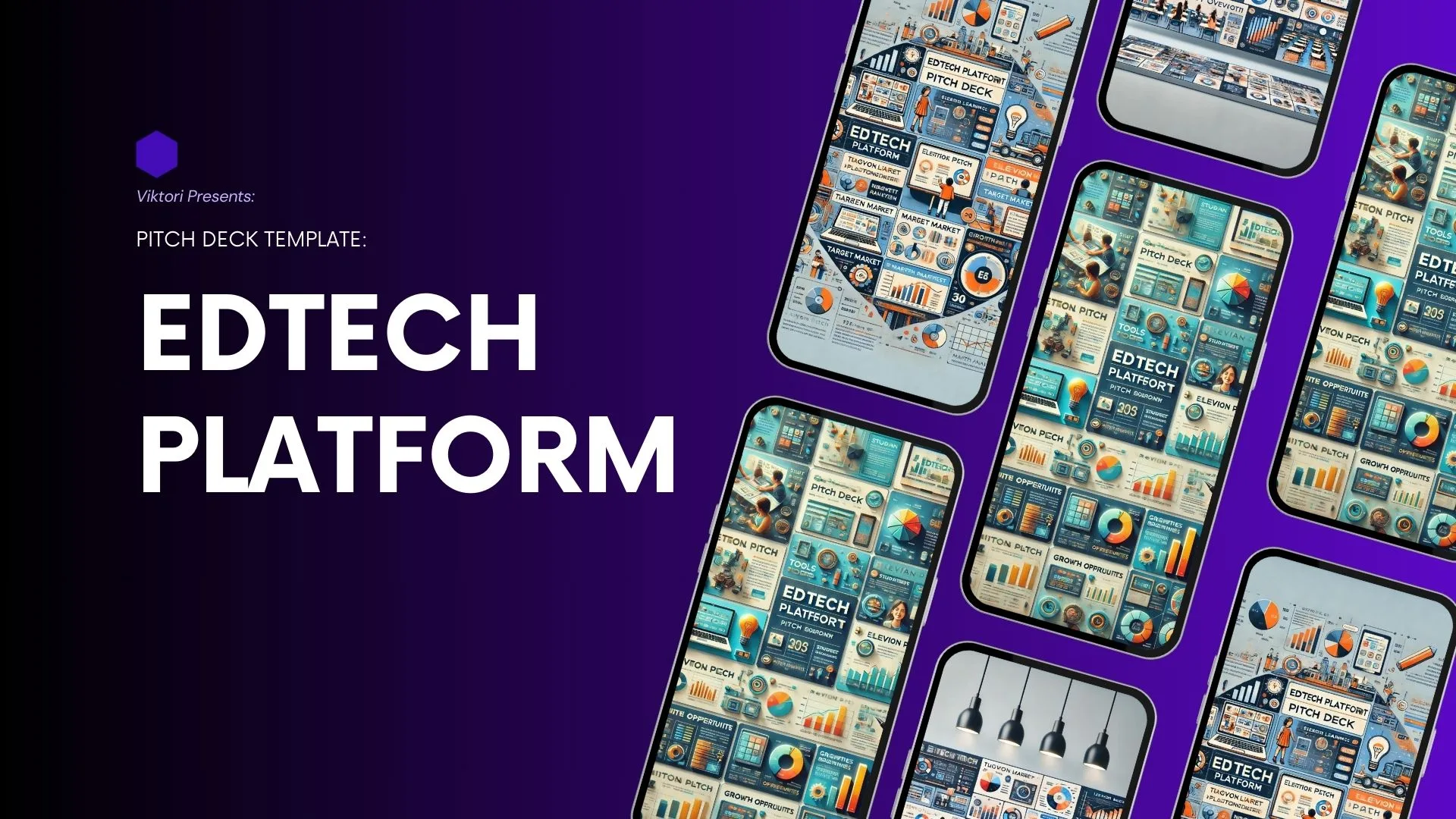

Author: Viktor
Pitch Deck Expert. Ex Advertising. Founder of Viktori. $500mill In Funding. Bald Since 2010.
The 12 Slide Language Learning App Pitch Deck Template
Slide 1: Elevator Pitch – “Reimagine How the World Learns Languages”
Headline:
Learning a new language should feel intuitive, personalized, and addictive—in a good way.
Supporting Points:
Over 1.5 billion people are trying to learn a new language, yet 70% drop off within 3 months.
We built [App Name] for modern learners—busy, tech-savvy, and outcome-driven.
Our platform combines neuroscience-backed microlearning, social gamification, and AI-personalized pathways to drive real-world language fluency.
Tagline (optional):
Speak more. Learn faster. Remember longer.
Slide 2: Investor Highlights – “Momentum You Can Bet On”
Bullet Points:
100,000+ active users with 25% MoM growth
4.8/5 average rating across app stores with over 10,000 reviews
35% 6-month retention – 3x industry average
Partnered with [e.g., education boards, travel brands, tech platforms]
Built by a team with experience from Duolingo, Coursera, and Spotify
Slide 3: The Problem – “Language Learning Is Broken”
Headline:
Most language learning apps fail to deliver lasting engagement and fluency.
Pain Points:
Learners are overwhelmed by generic lessons and inconsistent outcomes.
Current solutions are rigid and treat everyone the same—regardless of goals or learning styles.
Dropout rates are high because users feel disconnected from both content and progress.
Impact Statement:
Without a smarter, more engaging system, millions of learners will waste time, money, and motivation on platforms that simply don’t stick.
Slide 4: Market Opportunity – “A $60B Market Ready for a Shift”
Headline:
A generational shift in global learning demands a new category leader.
Market Data:
TAM: $60B global language learning market
SAM: $15B mobile/app-based learning sector
SOM: $1.2B addressable niche: young professionals, digital nomads, and K12 institutions
Trends Driving Growth:
Growth in remote work and relocation
Expansion of edtech and AI-driven personalization
Demand for real-world fluency, not just vocabulary
Slide 5: The Solution – “Smart, Sticky, Human-Centered Learning”
Headline:
[App Name] adapts to the learner—contextually, cognitively, and socially.
Solution Details:
Personalized Learning Journeys: AI tailors content to user behavior, goals, and native language.
Bite-Sized Modules: Learn in 5-minute bursts optimized for memory retention.
Social Immersion: Live challenges, speaking clubs, and peer coaching.
Before vs. After Visual:
Left: Isolated, bored, stuck on Lesson 3
Right: Active, supported, speaking confidently within weeks
Slide 6: Product Demo – “Learning, as It Should Feel”
Headline:
Showcase the experience, not just the app.
Visual Focus:
Slide mockup or GIF of the user interface
Flow from login → goal setup → first personalized session
Highlight real-time feedback, gamification, community badges, or voice interaction
Callout Highlights:
“Daily streaks increased by 65% with our notification engine”
“Speech recognition boosts pronunciation feedback”
“Live group sessions show 3x retention over solo learning”
Slide 7: Business Model – “Simple, Scalable, Profitable”
Headline:
Multiple revenue streams built for long-term growth.
Model Breakdown:
Freemium Model: Core lessons free; premium unlocks advanced content, live tutoring, and certification.
Subscription Tiers: $9.99/month individual; $29.99/month family or school account.
B2B Licensing: Custom plans for schools, enterprises, and governments.
Affiliate Revenue: Integration with study abroad programs and language certification tests.
Unit Economics Snapshot:
CAC: $6.10
LTV: $73.00
Payback period: < 2 months
Slide 8: Go-to-Market Strategy – “Rapid Growth via Community and Channel Leverage”
Headline:
A hybrid GTM playbook focused on virality, trust, and conversion.
Channels:
Organic Growth: SEO, app store optimization, and user-generated content
Influencer Partnerships: YouTube polyglots, language learning TikTokers
Referral Engine: Reward-based invite system built into the app
Education Outreach: Partnerships with schools, ESL programs, and nonprofits
Strategy Layers:
Launch in Tier 1 English-as-a-second-language countries first
Expand via corporate training, travel, and education verticals
Slide 9: Traction – “Proof That It Works”
Headline:
Strong early traction with compelling engagement metrics.
Key Metrics:
User Growth: 20k → 100k in 6 months
Retention: 35% at 6 months (industry avg. 12%)
Engagement: Avg. session length: 14 minutes; 4.2 sessions/week
Revenue: $320k ARR and accelerating
User NPS: 71
User Voice:
Screenshot or pull quote: “This is the only app that made me want to practice daily.”
Slide 10: Competitive Landscape – “Positioned to Dominate Our Niche”
Headline:
Where legacy apps generalize, we specialize.
Comparison Table or 2×2 Matrix:
| Feature | Duolingo | Babbel | Rosetta Stone | [App Name] |
|---|---|---|---|---|
| AI Personalization | No | Basic | No | Yes |
| Live Social Learning | No | No | No | Yes |
| Modular Microlearning | Yes | Yes | Yes | Yes |
| B2B Capabilities | Limited | Moderate | No | Yes |
Positioning Statement:
Built for high-intent learners, not casual dabblers.
Slide 11: Team – “Builders, Educators, and Growth Experts”
Headline:
A cross-functional team with proven success in edtech, language, and product.
Team Highlights:
CEO (Name): Ex-Duolingo product leader; scaled user base 5x
CTO (Name): AI/NLP expert, former Coursera engineer
CMO (Name): Led user acquisition at top-tier SaaS company
Advisors: Language acquisition PhD, former Pearson exec, YC alum founder
Culture Note:
Mission-driven, diverse, and global-native team culture.
Slide 12: Vision & The Ask – “Let’s Shape the Future of Global Fluency”
Headline:
We’re raising [$X] to scale impact, deepen intelligence, and expand globally.
Use of Funds:
40% Product development (AI & community tools)
30% Marketing and user acquisition
20% Talent and operations
10% Partnerships and content expansion
Vision Statement:
To empower 100 million people to speak a new language fluently and fearlessly—on their terms.
Closing Message:
Join us in redefining what it means to learn—and belong—globally.
Need a customized pitch deck template?
1000s of individuals like you asked for a tailored version of this template to help them craft a better pitch deck. Get yours for just $44. As soon as I get your request, I’ll follow up with one question to confirm what exactly is that are you pitching. This will help me nail the content for you.
What you’ll get is a 3+ page editable word document that contains a fully fleshed out slide by slide deck content for your pitch.
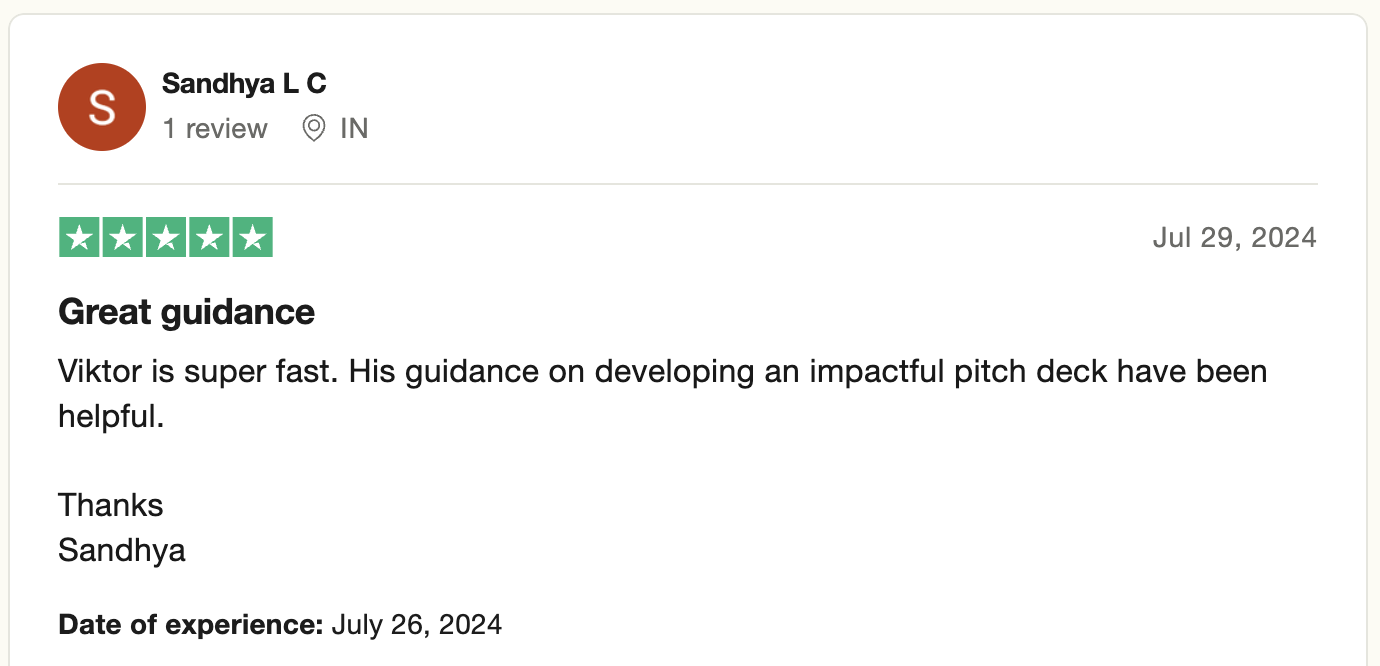
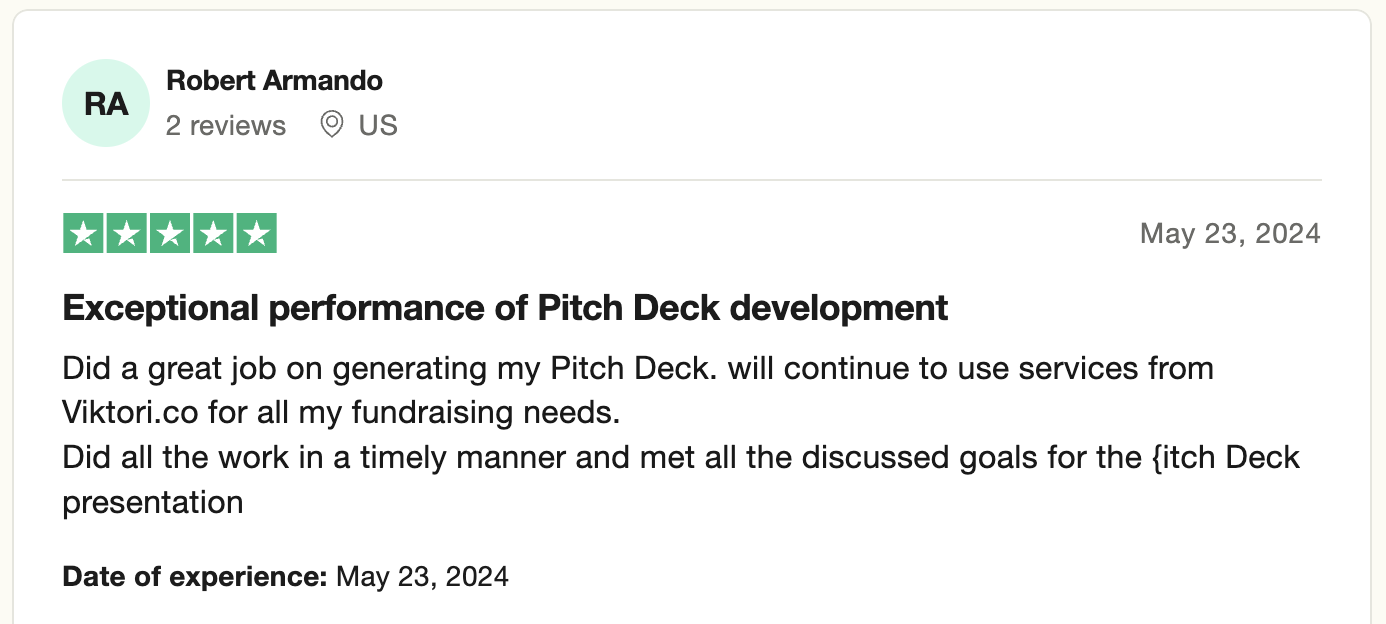
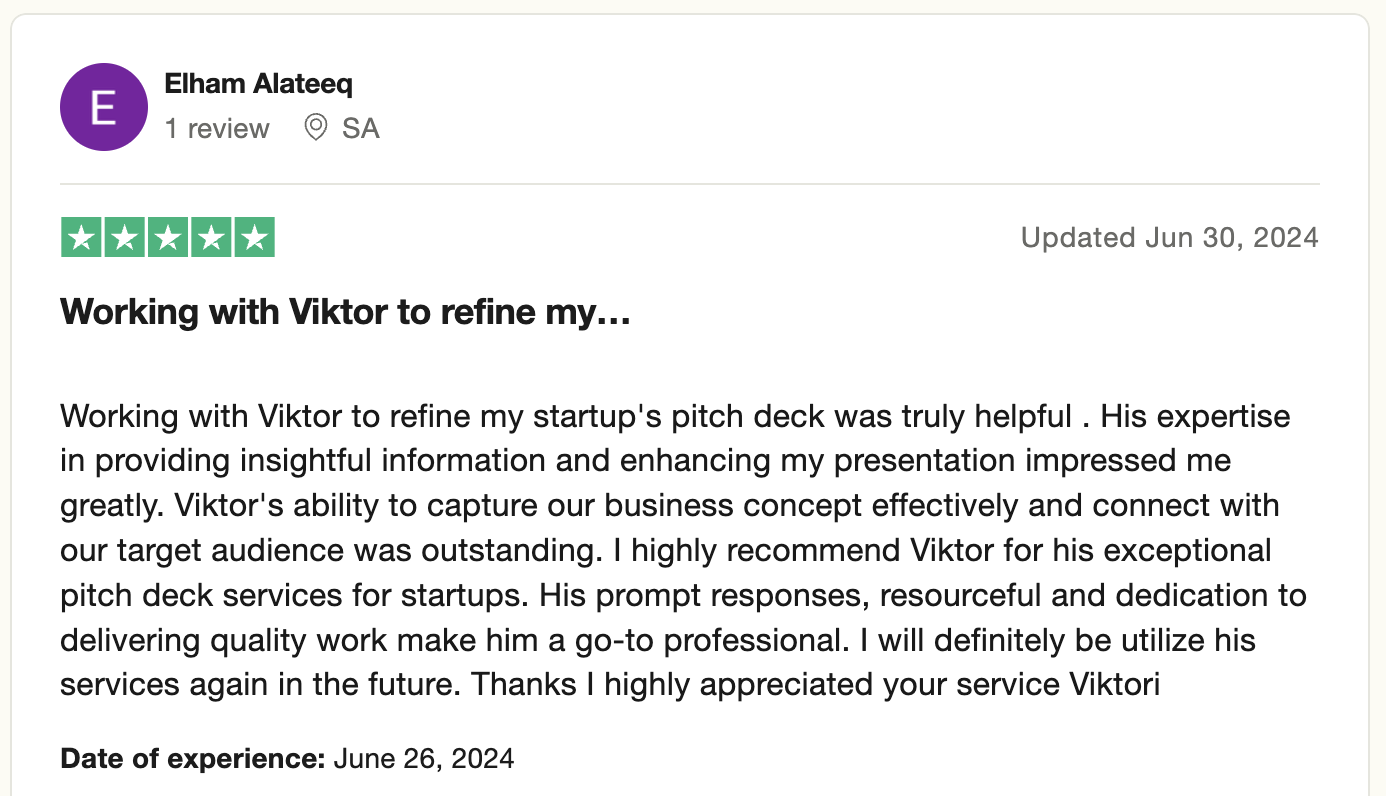

Alternatively, book a call and you’ll brief me on the specifics of your pitch.
Book The Free 30 Min Call
5/5 Upwork Rating | 100% TrustPilot

Plan on building the pitch deck yourself?
Option 1: Build with Gamma
Gamma is the preferred Ai presentation maker and if you’re strapped for resources, this tool will help you flesh out an ok pitch deck presentation. Here’s how it looks:
Option 2: Do It Yourself
If you’ve done a few presentation in the past, then this is the option you should take. Follow these simple steps:
- Pick one of the premium Envato templates by clicking on the image below,
- Answer the slide by slide questions I listed in the section below the image
- Follow the pitch deck guide I linked out to, next to the questions,
And build your own deck. It’s as easy as that.
Key Questions to Ask Yourself And Write The Language Learning App Pitch Deck Slides
Slide 1: Elevator Pitch – “Reimagine How the World Learns Languages”
What is the primary pain point or inefficiency in the current language learning experience?
Who exactly are you building this for? (persona, demographic, psychographic)
What are the top 1–2 benefits users get from using your app?
What bold statement or unexpected truth would make someone sit up and listen?
How do you want people to describe your app in one sentence?
Slide 2: Investor Highlights – “Momentum You Can Bet On”
What are your most impressive metrics (growth rate, revenue, engagement)?
What differentiates your traction from competitors?
Have you secured notable partnerships, advisors, or media attention?
What signals of product-market fit can you show?
What would make an investor immediately lean in?
Slide 3: Problem – “Language Learning Is Broken”
What are the top frustrations your users face with current solutions?
Why do most people fail to learn a new language?
How are these problems costing users time, money, or confidence?
Are there any stats or quotes that reinforce the problem’s urgency?
What emotional toll does the problem take on your users?
Slide 4: Market Opportunity – “A $60B Market Ready for a Shift”
What is the TAM, SAM, and SOM for your market?
How did you calculate those figures?
What is your immediate addressable niche (by persona or geography)?
What macro-trends (remote work, AI, immigration, education reform) support your growth?
Who are your first 10,000 or 1 million users?
Slide 5: Solution – “Smart, Sticky, Human-Centered Learning”
What are the 2–3 core innovations that make your solution stand out?
How does the user experience feel different compared to others?
What measurable outcomes do users achieve faster or better with your app?
What real-world transformation does your app deliver?
Can you visually represent a “before” and “after” experience?
Slide 6: Product Demo – “Learning, as It Should Feel”
What are the top 3 features that make your product addictive and effective?
What does the user see and feel within the first 5 minutes?
Which flows or screens best showcase your differentiators?
How does your app look on mobile, tablet, or desktop?
Are there any testimonials or reactions that bring the demo to life?
Slide 7: Business Model – “Simple, Scalable, Profitable”
What’s your primary monetization model (freemium, subscription, B2B)?
What is your pricing structure? Is it flexible by market?
What are your customer acquisition cost (CAC) and lifetime value (LTV)?
How quickly do you recover CAC?
What new revenue channels are emerging (certifications, partnerships, enterprise sales)?
Slide 8: Go-to-Market Strategy – “Rapid Growth via Community and Channel Leverage”
Who are your early adopters, and how do you reach them?
What marketing channels are already working or expected to work?
How do you use content, community, or influencers to scale?
What role does virality or referrals play in your growth engine?
What partnerships or distribution deals could accelerate adoption?
Slide 9: Traction – “Proof That It Works”
What traction metrics validate demand and engagement?
What are your month-over-month (MoM) or year-over-year (YoY) growth numbers?
What retention or session metrics show strong user love?
Have you hit any major milestones (revenue, downloads, pilots)?
What stories, reviews, or testimonials highlight your impact?
Slide 10: Competitive Landscape – “Positioned to Dominate Our Niche”
Who are your main competitors, and how are you different?
What specific advantage makes you hard to copy? (data, tech, brand, UX)
What weaknesses or blind spots do the incumbents have?
Can you create a clear, visual positioning map or feature comparison?
How do you plan to stay ahead as the market evolves?
Slide 11: Team – “Builders, Educators, and Growth Experts”
Who are the key team members, and what are their superpowers?
What relevant experience or exits does your founding team have?
Are there advisors or collaborators adding credibility?
What does your company culture emphasize?
How is your team uniquely qualified to win in this space?
Slide 12: Vision & The Ask – “Let’s Shape the Future of Global Fluency”
What is your fundraising goal, and what’s the use of funds breakdown?
What key milestones will this round help you achieve?
What is your 3–5 year vision for the company?
What kind of investor are you looking for (beyond capital)?
How will the world change if your vision becomes reality?
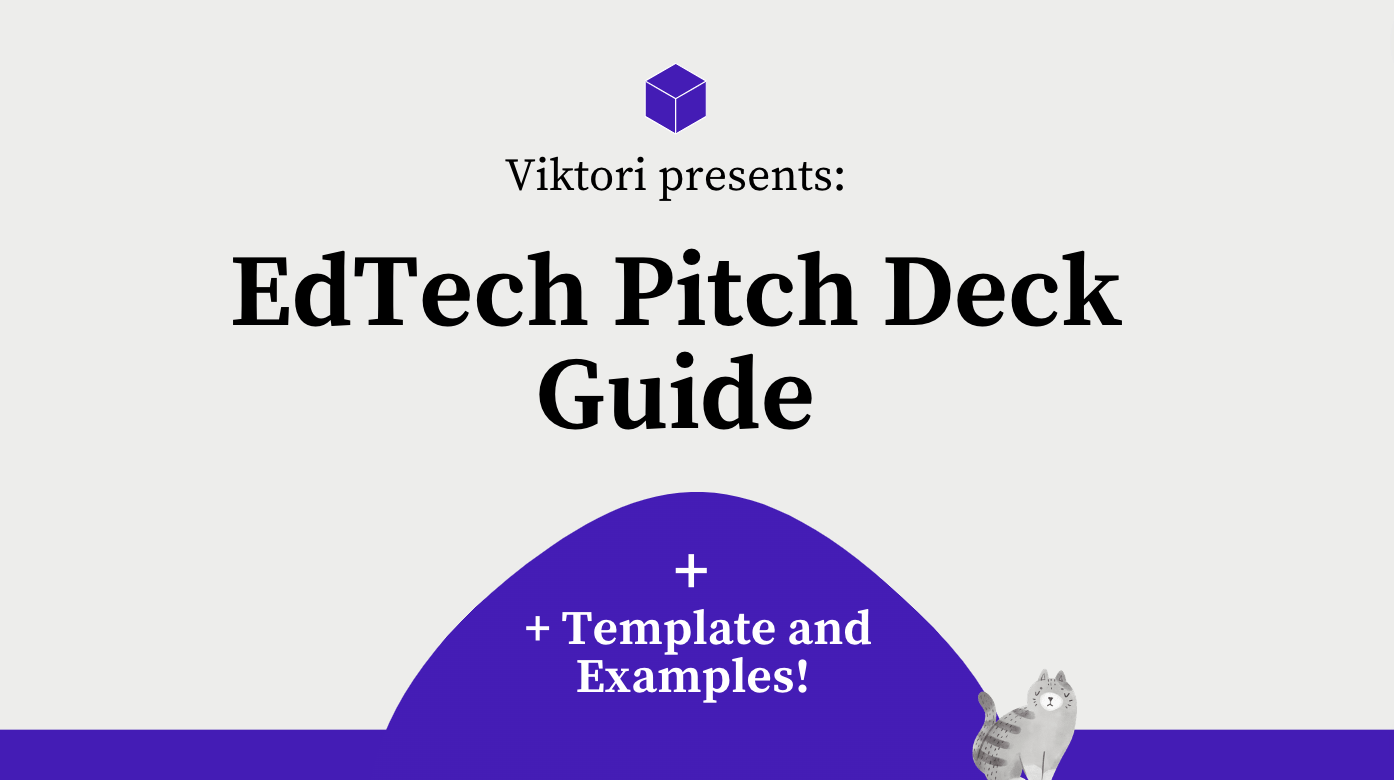
Follow My EdTech Pitch Deck Guide
A detailed guide with the steps outlined to get to a investor ready deck.
Alternatively, book a call and get the full pitch deck done. Hands-off.
Related EdTech Pitch Deck Templates
Slide by Slide Guides
Viktori. Pitching your way to your next funding.
Locations
Office 1: 633 North Wells Street Chicago, IL, United States, 60654
HQ: Boulevard P.O. 10000 Skopje, North Macedonia
Pitch Deck Resources
Case Studies
Client Reviews
Alright, let’s be real for a second. You’ve got this game-changing idea to teach the world about edtech, but every time you pitch it, the room goes cold. It’s not because your idea isn’t important (because it is, seriously), but the way you’re presenting it? Yeah, that’s where the problem lies. Think of it like trying to grow a garden without sunlight – no matter how good the seeds are, they just won’t bloom.
Let’s roll up our sleeves and get to work. By the time we’re done here, you’ll have a pitch deck that not only sells your vision but makes everyone wish they thought of it first.
Let’s dive in.
17 Slide Edtech Platform Pitch Deck Template
1. Elevator Pitch Slide
Objective: Concisely summarize the innovation hub’s purpose, target audience, and benefits.
- Content:
- Title: Innovation Hub: Empowering the Future of Learning, Innovation, and Entrepreneurship
- Tagline: “Transforming ideas into reality”
- Body: “Our Innovation Hub is a dynamic ecosystem designed to foster innovation, provide comprehensive e-learning opportunities, conduct impactful community research, and empower entrepreneurs to launch successful startups. We serve students, researchers, entrepreneurs, and local communities, driving economic growth and societal development through cutting-edge resources and support.”
2. Target Market
Objective: Provide an in-depth look at the specific target markets.
- Content:
- Title: Target Market Analysis
- Body:
- Students: Online and in-person learners seeking quality education and skills development.
- Market Size: 1 million students within our region.
- Growth Rate: 10% annual increase in e-learning enrollments.
- Researchers: Academics and professionals conducting community-based research.
- Market Size: 50,000 active researchers.
- Growth Rate: 7% annual increase in research funding.
- Entrepreneurs: Aspiring and existing business owners looking for training and support.
- Market Size: 200,000 potential entrepreneurs.
- Growth Rate: 15% annual increase in startup activity.
- Communities: Local communities needing development projects and services.
- Market Size: 500 communities within our operational scope.
- Growth Rate: Increasing demand for sustainable development initiatives.
- Students: Online and in-person learners seeking quality education and skills development.
3. Problem and Impact
Objective: Discuss the problems the hub aims to address and the broader impact if left unresolved.
- Content:
- Title: Problem and Impact
- Body:
- Problem 1: Lack of integrated innovation support.
- Impact: Stagnant economic growth and missed opportunities for technological advancements.
- Problem 2: Insufficient access to quality education.
- Impact: Limited skill development and decreased competitiveness in the job market.
- Problem 3: Gaps in community research and development.
- Impact: Ineffective solutions to local issues and underdeveloped communities.
- Problem 4: Challenges in starting and scaling new businesses.
- Impact: High failure rates of startups and loss of potential economic contributions.
- Problem 1: Lack of integrated innovation support.
4. The Opportunity
Objective: Conduct a detailed market analysis and potential.
- Content:
- Title: Market Opportunity
- Body:
- Growing Demand: Increasing need for innovation hubs due to technological advancements and global competition.
- Market Value: $50 billion global market for innovation and entrepreneurship hubs.
- E-Learning Boom: Rising preference for flexible and accessible learning solutions.
- Market Value: $200 billion global e-learning market by 2026.
- Community Development Focus: Increased funding for research and community projects.
- Market Value: $10 billion in annual community development grants.
- Entrepreneurial Ecosystem: Expanding support networks for startups.
- Market Value: $30 billion invested in startup incubators and accelerators annually.
- Growing Demand: Increasing need for innovation hubs due to technological advancements and global competition.
5. The Gap
Objective: Illustrate the existing market gap that the innovation hub addresses.
- Content:
- Title: The Market Gap
- Body:
- Current Landscape: Existing hubs and education platforms are often fragmented and lack comprehensive support.
- Our Solution: A unified innovation hub that integrates e-learning, research, community projects, and entrepreneurial training.
- Unique Offering: One-stop-shop for all innovation, education, and business development needs.
- Benefits: Streamlined processes, increased collaboration, and more efficient use of resources.
6. Unique Solution
Objective: Provide a detailed explanation of the innovation hub’s technology and uniqueness.
- Content:
- Title: Our Unique Solution
- Body:
- Innovation Lab: Equipped with state-of-the-art technology for prototyping and testing new ideas.
- Features: 3D printers, advanced computing resources, collaborative workspaces.
- E-Learning Platform: Offering a hybrid model of online and in-person courses.
- Features: Interactive courses, virtual labs, personalized learning paths.
- Research and Development Center: Supporting community projects with training, monitoring, and evaluation.
- Features: Data analysis tools, project management software, grant writing assistance.
- Entrepreneurship Training: Comprehensive programs to help start and grow businesses.
- Features: Business plan development, mentorship programs, funding access workshops.
- Innovation Lab: Equipped with state-of-the-art technology for prototyping and testing new ideas.
7. Customer Benefits
Objective: Highlight the benefits to different stakeholders in adopting your solution.
- Content:
- Title: Customer Benefits
- Body:
- For Students:
- Benefit: Access to quality education and skills development.
- Impact: Improved job prospects and career growth.
- For Researchers:
- Benefit: Enhanced resources for conducting impactful research.
- Impact: Greater research outcomes and contributions to knowledge.
- For Entrepreneurs:
- Benefit: Comprehensive support from idea to launch.
- Impact: Increased success rates of startups and economic contribution.
- For Communities:
- Benefit: Effective solutions to local challenges through research and development.
- Impact: Sustainable community growth and development.
- For Students:
8. Plain Vanilla
Objective: Show how the solution aligns with existing technologies to mitigate investment risk.
- Content:
- Title: Technology Alignment
- Body:
- Compatibility: Seamlessly integrates with current e-learning platforms, research tools, and business software.
- Examples:
- E-Learning Integration: Works with platforms like Coursera, edX, and Moodle.
- Research Tools: Utilizes software such as SPSS, Tableau, and NVivo.
- Business Software: Compatible with CRM systems, accounting tools, and project management applications.
- Risk Mitigation: Reduces implementation risks by aligning with familiar technologies and processes.
9. Competitor Analysis
Objective: Analyze competitors and your unique positioning.
- Content:
- Title: Competitor Analysis
- Body:
- Competitor Overview: Overview of major competitors in the innovation hub space.
- Competitor 1: A local innovation center focusing on tech startups.
- Competitor 2: An e-learning platform with limited in-person support.
- Competitor 3: A community development organization with limited entrepreneurial training.
- Our Unique Positioning:
- Comprehensive Approach: Integration of innovation, e-learning, research, and entrepreneurship in one hub.
- Competitive Advantages: More resources, broader support, and a holistic ecosystem.
- Competitor Overview: Overview of major competitors in the innovation hub space.
10. Case Studies and Pilot Projects
Objective: Provide success stories and outcomes from your projects.
- Content:
- Title: Success Stories
- Body:
- Case Study 1: Launch of a successful tech startup through our entrepreneurship program.
- Outcome: Raised $1 million in seed funding, now employing 20 people.
- Case Study 2: Community research project leading to sustainable water management solutions.
- Outcome: Improved water access for 5,000 residents.
- Case Study 3: E-learning program increasing pass rates for underprivileged students.
- Outcome: 85% of participants improved their grades and graduated.
- Case Study 1: Launch of a successful tech startup through our entrepreneurship program.
11. Timeline
Objective: Outline the project implementation and scaling timeline.
- Content:
- Title: Implementation and Scaling Timeline
- Body:
- Phase 1: Initial Setup (Months 1-6)
- Secure funding and partnerships.
- Acquire and set up the physical location.
- Develop the e-learning platform and research center.
- Phase 2: Launch (Months 7-12)
- Launch the innovation hub with initial programs.
- Begin recruitment of students, researchers, and entrepreneurs.
- Start initial marketing and outreach efforts.
- Phase 3: Growth and Expansion (Year 2-3)
- Expand course offerings and research projects.
- Increase the number of startups incubated.
- Scale community projects and partnerships.
- Phase 4: Full Scale Operations (Year 4-5)
- Achieve full capacity with ongoing programs.
- Regularly assess and refine operations for continuous improvement.
- Expand to additional locations based on success metrics.
- Phase 1: Initial Setup (Months 1-6)
12. Why Now
Objective: Highlight the current need and urgency for this solution.
- Content:
- Title: Why Now
- Body:
- Current Trends:
- Increasing demand for innovative solutions and entrepreneurial ventures.
- The rise of e-learning due to technological advancements and global events.
- Urgent Needs:
- Immediate need for community development and sustainable projects.
- Growing interest in research-driven solutions to address local and global issues.
- Market Conditions:
- Favorable economic conditions for investment in innovation and education.
- Availability of funding and grants for educational and entrepreneurial initiatives.
- Current Trends:
13. Team and Credentials
Objective: Present the team background and relevant achievements.
- Content:
- Title: Our Team
- Body:
- Leadership Team:
- John Doe, CEO: Over 20 years of experience in innovation and technology management. Previously led successful tech startups.
- Jane Smith, COO: Expert in educational program development with a PhD in Education. Former head of online learning at a major university.
- Michael Brown, CTO: Specialist in IT infrastructure and e-learning platforms. Former senior engineer at a leading tech company.
- Advisory Board:
- Dr. Emily White, Research Advisor: Renowned researcher in sustainable development with numerous published studies.
- Laura Green, Entrepreneurship Advisor: Experienced entrepreneur and mentor with a track record of successful startups.
- Supporting Team:
- A diverse group of professionals with expertise in education, technology, business development, and community projects.
- Leadership Team:
14. Partnerships and Collaboration
Objective: Outline existing and potential strategic partnerships.
- Content:
- Title: Strategic Partnerships
- Body:
- Existing Partnerships:
- University Collaborations: Partnerships with local and international universities for research and student exchange programs.
- Tech Companies: Collaborations with leading tech firms for innovation support and resource sharing.
- Government Agencies: Working with government bodies for community project funding and support.
- Potential Partnerships:
- Industry Leaders: Targeting collaborations with industry leaders for mentorship and investment opportunities.
- Nonprofits: Partnering with nonprofit organizations to enhance community development efforts.
- Funding Organizations: Engaging with venture capital firms and grant providers to secure additional funding.
- Existing Partnerships:
15. Funding and Financials
Objective: Specify financial needs, projections, and funding usage.
- Content:
- Title: Funding and Financial Projections
- Body:
- Funding Requirements:
- Seeking $10 million in initial funding.
- Breakdown: $4 million for infrastructure, $3 million for technology and platform development, $2 million for program development, $1 million for marketing and outreach.
- Financial Projections:
- Year 1:
- Revenue: $2 million
- Expenses: $1.5 million
- Year 2:
- Revenue: $5 million
- Expenses: $3 million
- Year 3:
- Revenue: $10 million
- Expenses: $6 million
- Year 4:
- Revenue: $20 million
- Expenses: $12 million
- Year 5:
- Revenue: $30 million
- Expenses: $18 million
- Year 1:
- Funding Usage:
- Infrastructure and facility setup.
- Technology platform development.
- Program development and expansion.
- Marketing and community outreach.
- Funding Requirements:
16. The Ask
Objective: Clearly state what you’re seeking from the audience.
- Content:
- Title: Our Ask
- Body:
- Investment Request: Seeking $10 million in funding to support the launch and growth of the innovation hub.
- Investment Terms:
- Equity offering: 15% stake in the innovation hub.
- Use of funds: Detailed breakdown of how the investment will be utilized.
- Call to Action:
- “Join us in revolutionizing innovation, education, and entrepreneurship. Your investment will drive meaningful change and create lasting impact in our community and beyond.”
17. Closing and Contact Information
Objective: Summarize and provide contact details for follow-up.
- Content:
- Title: Closing and Contact Information
- Body:
- Summary:
- Recap the mission and vision of the innovation hub.
- Highlight the unique value proposition and potential impact.
- Contact Information:
- John Doe, CEO
- Email: john.doe@innovationhub.com
- Phone: +1-234-567-890
- Website: www.innovationhub.com
- Thank You:
- “Thank you for your time and consideration. We look forward to partnering with you to create a brighter future through innovation, education, and entrepreneurship.”
- Summary:
Last Words
So, here we are at the end of the pitch. You’ve laid out your vision, shown off the platform, and even highlighted how it’s going to change the world. But here’s the thing – ideas don’t change the world on their own. It’s the action that does. And that’s where you come in.
You’ve got the solution to a problem that the world can’t afford to ignore. The only thing standing between you and making a real impact is the support to take this to the next level. The good news? You’re not alone in this. I’ve seen pitches succeed, and I’ve seen them flop – the difference is always in how you close the deal.
So, let’s cut to the chase: You’ve got something incredible here, and now it’s time to make it a reality. You don’t need a pat on the back; you need partners, investors, and believers who’ll roll up their sleeves with you. The ball’s in your court – ready to take the shot?
Let’s make it happen. You got this!


